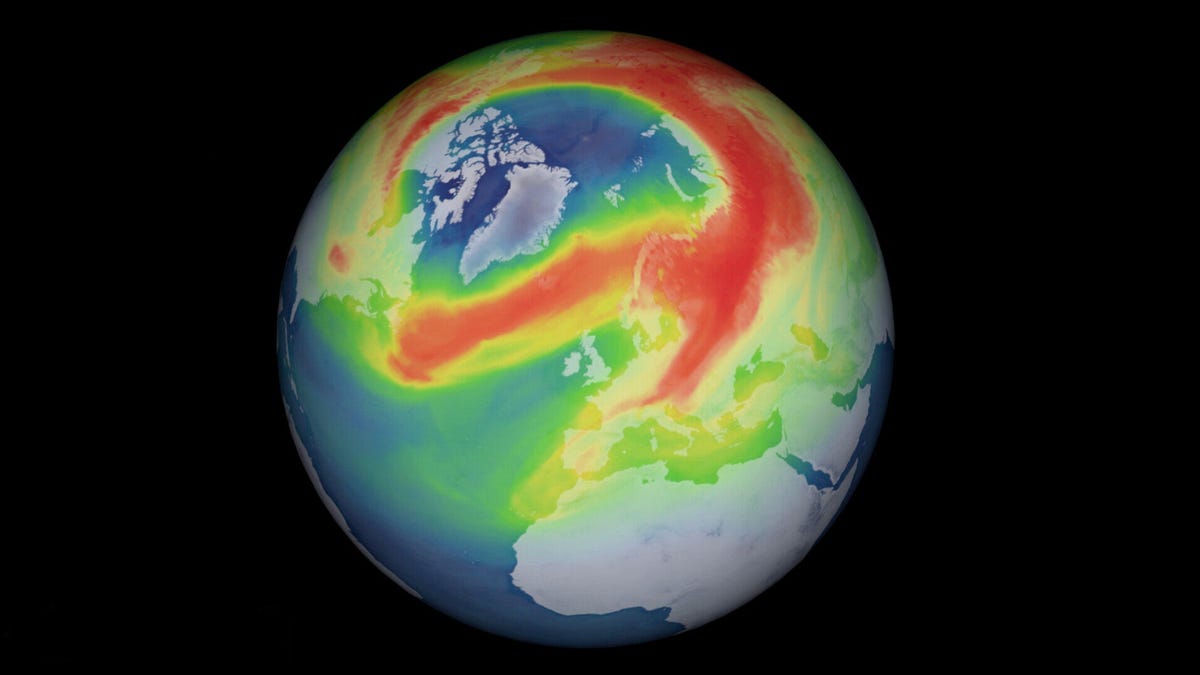Largest Arctic ozone hole on record closes itself up
A pesky polar vortex messed with the ozone layer over the Arctic.
Something strange happened over the Arctic this year when a hole developed in the ozone layer. The European Commission's Copernicus satellite program tracked the unusual occurrence, and now has evidence that the hole healed itself.
The ozone layer acts like sunscreen for the Earth, protecting life from harmful ultraviolet radiation. The most famous ozone hole is the one that occurs annually in the Antarctic.
Arctic ozone holes aren't completely unheard of. There was a similar, event in 2011, though not as large. The Copernicus Atmosphere Monitoring Service (CAMS) described this year's northern hemisphere hole as record-breaking and unusual.
The European Centre for Medium-Range Weather Forecasts research institute announced the healing event last week, saying "the unprecedented 2020 northern hemisphere ozone hole has come to an end."
The unprecedented 2020 northern hemisphere #OzoneHole has come to an end. The #PolarVortex split, allowing #ozone-rich air into the Arctic, closely matching last week's forecast from the #CopernicusAtmosphere Monitoring Service.
— Copernicus ECMWF (@CopernicusECMWF) April 23, 2020
More on the NH Ozone hole➡️https://t.co/Nf6AfjaYRi pic.twitter.com/qVPu70ycn4
The discovery of the Antarctica ozone hole spurred a global effort to reduce the use of harmful chemicals that contribute to the opening. The Arctic hole, however, isn't traced to human activity, but to what the European Space Agency called "unusual atmospheric conditions," including a powerful polar vortex of swirling cold air.
CAMS described the 2020 Arctic polar vortex as "exceptionally strong and long lived." Frigid low temperatures in the stratosphere also played into the hole's formation. Once the polar vortex eased up, the hole was able to close.
While the Arctic hole is taking care of itself, the Antarctica hole remains a concern. There is some good news on that front. NASA announced in 2018 the first direct proof of ozone recovery due to the chemicals ban. The 2019 hole was the smallest on record, but the healing process is still expected to take decades.


